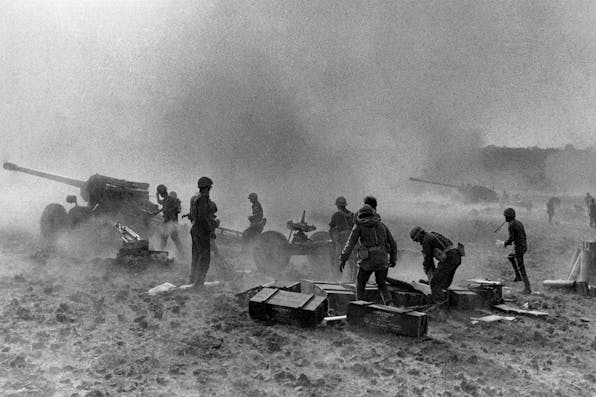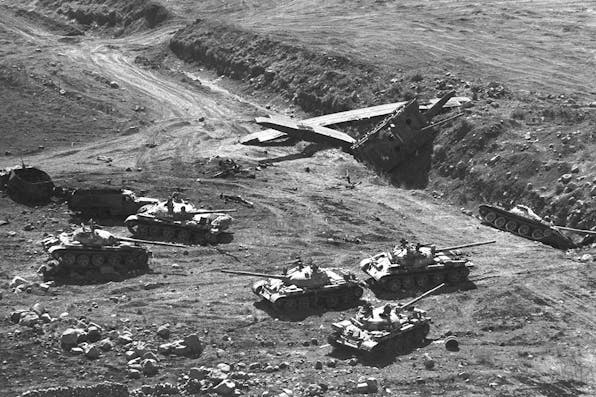
October 2023
The Hidden Calculation Behind the Yom Kippur War
It's long been the greatest question about the war: why Israel waited to be attacked. But what if it was convinced to wait by its closest ally, the United States?
History records Israel’s triumph in 1967 as the Six-Day War, but the key operations that clinched the victory took closer to six hours than six days. Shortly after 7:45 in the morning on June 5, Israeli jets attacked Egyptian airfields in synchronized waves: the first wave destroyed aircraft on the tarmac before pilots scrambled into cockpits; the second shredded runways to make takeoff impossible; and the following waves destroyed stranded planes that eluded destruction in the first wave. This bold opening gambit secured air superiority over Egypt, Israel’s most dangerous foe, making victory over the entire Arab coalition all but inevitable. Arab tanks turned into sitting ducks, and the Israel Defense Forces became unstoppable.
Swift and total, Israel’s victory in 1967 seemed as if it were ordered from on high, as if Joshua’s battle for Jericho played out on the six o’clock news. Just six years later, however, the Egyptian and the Syrian militaries overwhelmed Israel’s defenses, and they did so precisely as Israel had done to them in 1967—namely, in a single day.
At 2:00 pm on Yom Kippur, October 6, 1973, Egyptian and Syrian forces stormed across Israel’s frontiers in the Sinai desert and the Golan Heights. The speed and power of the attack overpowered Israel’s frontline defenders and discombobulated its military and civilian leadership. It suddenly became clear that Israel’s assumptions about its own strength, the character of its enemies, and the fundamental shape of the modern battlefield were erroneous.
Responses to October ’s Essay

October 2023
Israel Won the Yom Kippur War Because Golda Dug In Her Orthopedic Heels
By Uri Kaufman
October 2023
How Israel Got Caught by Surprise in 1973 and 2023
By Michael Doran, Jonathan Silver
October 2023
No Surprise: Surprise Was Indeed the Key Element of the Yom Kippur War
By Eitan Shamir
October 2023
In the Yom Kippur War, Strategic Vision Mattered Most
By Michael Doran